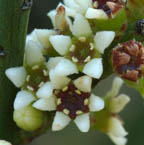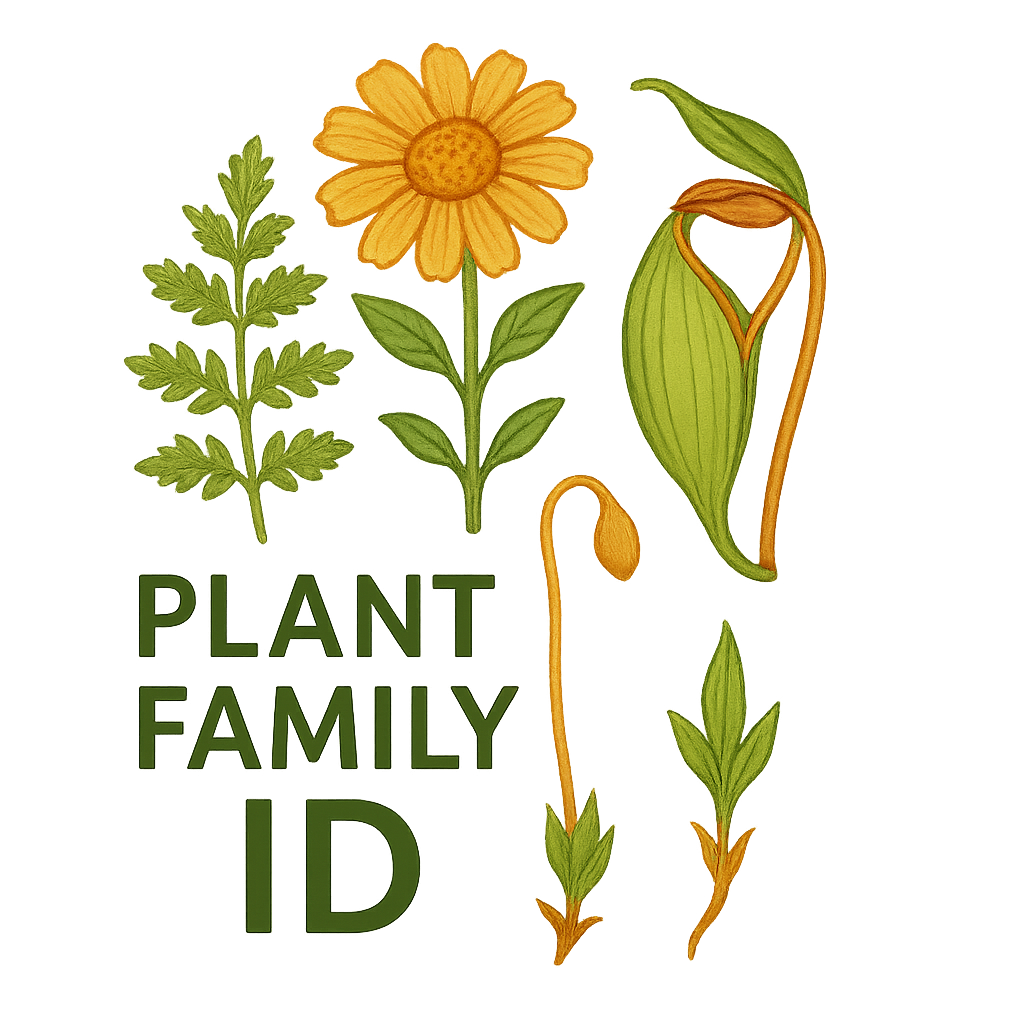Amphorogynaceae
Amphorogyna Family
Amphorogynaceae is a family of parasitic flowering plants in the order Santalales, comprising approximately 10 genera and 100 species. These plants are characterized by their hemiparasitic nature, attaching to the roots or branches of host plants via specialized haustoria. Members of this family typically have simple, alternate leaves and small, inconspicuous flowers with a reduced perianth. The family has a primarily Southern Hemisphere distribution, with centers of diversity in Australia, New Zealand, and parts of Southeast Asia, where they play important ecological roles in various ecosystems.

Overview
The Amphorogynaceae family comprises a diverse group of hemiparasitic flowering plants that establish parasitic relationships with host plants, extracting water and nutrients while still performing photosynthesis. The family name is derived from the genus Amphorogyne, which is native to New Caledonia.
Amphorogynaceae has a predominantly Southern Hemisphere distribution, with the greatest diversity found in Australia, New Zealand, New Caledonia, and parts of Southeast Asia. Different genera have adapted to specific host plants and ecological niches, with some parasitizing roots and others attaching to branches of host plants.
Members of this family are ecologically important as they influence plant community dynamics through their parasitic relationships. They represent an interesting evolutionary lineage within the Santalales order, showing various adaptations to the parasitic lifestyle.
Quick Facts
- Scientific Name: Amphorogynaceae
- Common Name: Amphorogyna Family
- Number of Genera: Approximately 10 (including Amphorogyne, Daenikera, Dendromyza)
- Number of Species: Approximately 100
- Distribution: Primarily Southern Hemisphere (Australia, New Zealand, Southeast Asia)
- Evolutionary Group: Angiosperms - Eudicots - Santalales
Key Characteristics
Growth Form and Habit
Members of Amphorogynaceae exhibit diverse growth forms, ranging from shrubs and small trees to woody climbers and herbaceous plants. Their growth habit is often adapted to their specific parasitic lifestyle, with some species parasitizing roots (root parasites) and others attaching to branches (stem parasites).
Parasitic Structures
The most distinctive feature of Amphorogynaceae is their haustorial connection to host plants. The haustorium is a specialized structure that penetrates the host's tissues to extract water and nutrients. The structure and complexity of the haustorium vary among genera, reflecting different parasitic strategies.
Leaves
The leaves of Amphorogynaceae are typically simple and alternate, though some species may have opposite or whorled arrangements. Leaf morphology varies from well-developed, photosynthetic leaves to reduced, scale-like structures in some highly specialized parasitic forms.
Reproductive Structures
Amphorogynaceae plants have small, inconspicuous flowers with a reduced perianth (tepals). The flowers may be unisexual or bisexual, depending on the genus. The gynoecium typically consists of a single carpel with an inferior ovary. The fruits are usually drupes or nuts, often with a single seed, and may have adaptations for dispersal by birds or other animals.
Distinguishing Features
Amphorogynaceae can be distinguished from other plant families by a combination of:
- Hemiparasitic habit, attaching to roots or branches of host plants
- Haustorial connection to host plants
- Simple, typically alternate leaves
- Small flowers with reduced perianth
- Inferior ovary developing into drupes or nuts

Haustorial connection of an Amphorogynaceae species showing how it penetrates the host tissue to access vascular resources.
Identification
Field Identification Tips
When trying to identify members of the Amphorogynaceae family in the field, look for:
- Parasitic growth on roots or branches of host plants
- Simple, alternate leaves (in most genera)
- Small, inconspicuous flowers with reduced perianth
- Drupes or nuts as fruits
- Evidence of haustorial connection to the host plant
Similar Families
Amphorogynaceae may be confused with several other parasitic plant families:
- Santalaceae: Closely related family with similar parasitic habit but different floral structures and fruit types
- Viscaceae: Another parasitic family, but typically with opposite leaves and berries rather than drupes
- Loranthaceae: Mistletoe family with more showy flowers and different fruit structure
- Thesiaceae: Root parasites with different growth habit and floral morphology
Distinguishing Features
The most reliable features for distinguishing Amphorogynaceae from similar families include:
- Parasitic habit: Attaching to roots or branches of host plants
- Leaf arrangement: Typically alternate (versus opposite in Viscaceae)
- Fruit type: Drupes or nuts rather than berries
- Floral structure: Reduced perianth with specific arrangements of reproductive parts
For definitive identification, examination of the floral structure and fruit type is often necessary, as these features are the most diagnostic for the family.
Notable Examples
The family Amphorogynaceae contains approximately 100 species across 10 genera. Here are some notable representatives:

Amphorogyne celastroides
New Caledonian Amphorogyne
A shrubby parasitic plant endemic to New Caledonia, this species forms haustorial connections with the roots of various host plants. It has leathery, alternate leaves and small, inconspicuous flowers. The plant is of particular interest for its restricted distribution and specialized ecological niche in the unique ecosystems of New Caledonia.

Daenikera corallina
Coral Daenikera
Endemic to New Caledonia, this species is a woody parasitic plant that attaches to the branches of host trees. It has distinctive coral-like branches and reduced leaves. The plant produces small flowers and drupes that are dispersed by birds. It represents an interesting adaptation to the stem-parasitic lifestyle within the family.

Dendromyza reineckeana
Samoan Dendromyza
A parasitic woody climber native to Samoa and other Pacific islands. It forms haustorial connections with host trees and has alternate, leathery leaves. The plant produces small, greenish flowers and drupes that are an important food source for native birds, which disperse the seeds to new host trees.




